Get Familiar: Sleep D & Albrecht La’Brooy
In depth conversations with four of Melbourne's finest.
Sleep D and Albrecht La’Brooy are two Melbourne-based duos made up of Corey Kikos and Marios Syawish, and Sean La’Brooy and Alex Albrecht, respectively. All four have a penchant for live evolving soundscapes and deep club tracks, and although the output of each project differs slightly, they both share an artistic vision that celebrates Australia and, more directly, Melbourne and its surrounding suburbs.
Take a look at each of the duo’s respective labels and this thread is made apparent. Sleep D’s Butter Sessions label, for example, unearths and presents exciting local talent via solo releases and the Sounds Of The Suburbs and Domestic Documents compilations; while Albrecht La’Brooy’s Analogue Attic imprint is littered with distinctly Australian field recordings and record sleeves derived from native flora—a way to seek “inspiration, sounds, and ideas from our surroundings to impart a sense of place in our music,” Albrecht states. The curated releases and those from the label heads themselves—which are, arguably, the finest in each catalog—have gained the four of them and the artists in their orbit recognition far beyond their home country.
While their respective labels and releases are obvious calling cards, it’s in the live arena that the duos feel most at home—and are most well known. Their live sets range from dubby ambient to jazz-influenced, free-form electronics, and more techno-focused club styles, and it’s within this live format that their released output is recorded, too. Over the last few years, Sleep D have showcased their wares at Golden Plains Festival, Boiler Room, Berlin Atonal, and Panorama Bar, while Albrecht La’Brooy have performed sets at Inner Varnica, Strawberry Fields, and Berlin’s Patterns Of Perception—they all recently performed as Sleep D & Albrecht La’Brooy on a recent tour of Japan, too.
As a further nod to their wide-reaching live sets, in November of last year, Sleep D were commissioned to reinterpret the score for David Lynch’s cult film Eraserhead live for Hear My Eyes. The soundtrack, titled Erased, is an immersive and unsettling accompaniment to the dread-filled film and was released last month via Altered States on a limited-edition cassette and digitally. With the soundtrack now on the shelves and a wealth of new material on the way from both duos, XLR8R caught up with the four of them to learn more about their work.
In addition, Sleep D & Albrecht La’Brooy recorded an exclusive live set for XLR8R, available to stream and download at the bottom of the feature.
Let’s start with how the four of you met. How did it happen?
Alex: Sean was working in a building where Corey and Maryos (a.k.a Sleep D) had their studio. We had Corey master our first record and Sleep D helped us to promote it internationally. Ever since then, we’ve always been bumping into each other and sharing music.
When was this—how long have you guys been in contact?
Sean: We’ve known each other for five years.
Do you think Melbourne, in general, fosters this type of intersection for artists?
Maryos & Corey: Yes, this kind of meeting can happen anywhere really. Melbourne is reasonably small though, and has a tight community vibe, especially in our music world.
Can you talk to me about the respective beginnings of the Sleep D and Albrecht La’Brooy projects? How did these two projects start?
Corey: We (Corey & Maryos / Sleep D) met in high school in a place called Frankston in the suburban fringe of Melbourne and explored similar musical influences together all through school. We had early projects under other aliases which led us to what we do now. I was hanging out at the local beach a lot and I made some friends down there who were a little older and we would often go to this club. I came along one night and it was something new and exciting for me so I kept going. After a while, Maryos and I had this ambition of DJing there but never got the opportunity. So instead we played as many friends house parties as we could, with my small sound system and his decks. This taught us quite a bit about the skill of trying to hold a crowd together and allowed us to earn some money to buy synths, monitors, etc. It was around 2008 we started all this, about 15 years old.
Alex: Sean and I met when I contacted him for piano lessons in 2012. We became friends pretty quickly, then I started teaching him about DJing and producing. Naturally, we started making music together.
Maryos & Corey, what was being played at those early club nights?
Maryos & Corey: The music ranged from prog, electro, and fidget to what you could call hard house. It was all quite commercial-leaning but it gave us a good insight into what makes a good resident DJ who knows the scene well. Melbourne icons like John Course would play there most weeks.
What about you Alex and Sean—what were your respective entries into the scene?
Alex: I actually started DJing and producing when I was about 16 and got my first gig at a bar called the Station when I was 17. I remember being really nervous and the house rig having one of those all-in-one Pioneer systems with the really small jog wheel (CMX 3000?). I was terrified and ended up playing a lot of prog / deep house.
Sean: I only ever played in jazz bands until I met Alex. But while I was playing music at university, I did a fair bit of that. Little gigs in bars and in trios or just playing solo piano, that sort of thing.
Albrecht La’Brooy is a fusion of your last names, but what about Sleep D— what’s the story behind that name?
Maryos & Corey: It stemmed from an alias we made in high school named Sleepy Dino. At the time we were thinking about what name to call this little project we had started and we came to the conclusion that names didn’t have to be super serious and have all these hidden meanings etc. It was borrowed from a Flying Lotus—who we loved at the time—track and then evolved a couple years later to Sleep D.
What were your respective musical inspirations growing up?
Maryos: The first music I really got into on my own was metal and hardcore and then shortly after the bigger electronic acts like The Prodigy, Chemical Brothers, and Aphex Twin. It was amazing seeing these groups at Big Day Out and other festivals when we were 15 or 16. I was also exposed to lots of Arabic and Kurdish music like Sivan Perwer and Marcel Khalife through my parents’ tapes / CDs and going to parties with them. I’ve started to explore this more deeply over the past couple of years, too.
Corey: I would religiously listen to the dance show on the radio run by John Course. They’d play new stuff as well as classics and Australian music. My older sister would buy the latest Ministry Of Sound CDs so I’d listen to those on repeat too. Not long after I started browsing forums and had the first experience of illegal downloading on the internet which started expanding what I was exposed to.
Sean: I grew up listening to a lot of jazz and the Red Hot Chili Peppers.
Alex: Looking back, some of my biggest musical influences came from listening to my parents’ jazz, St. Germain, soundtrack, and compilation CDs.
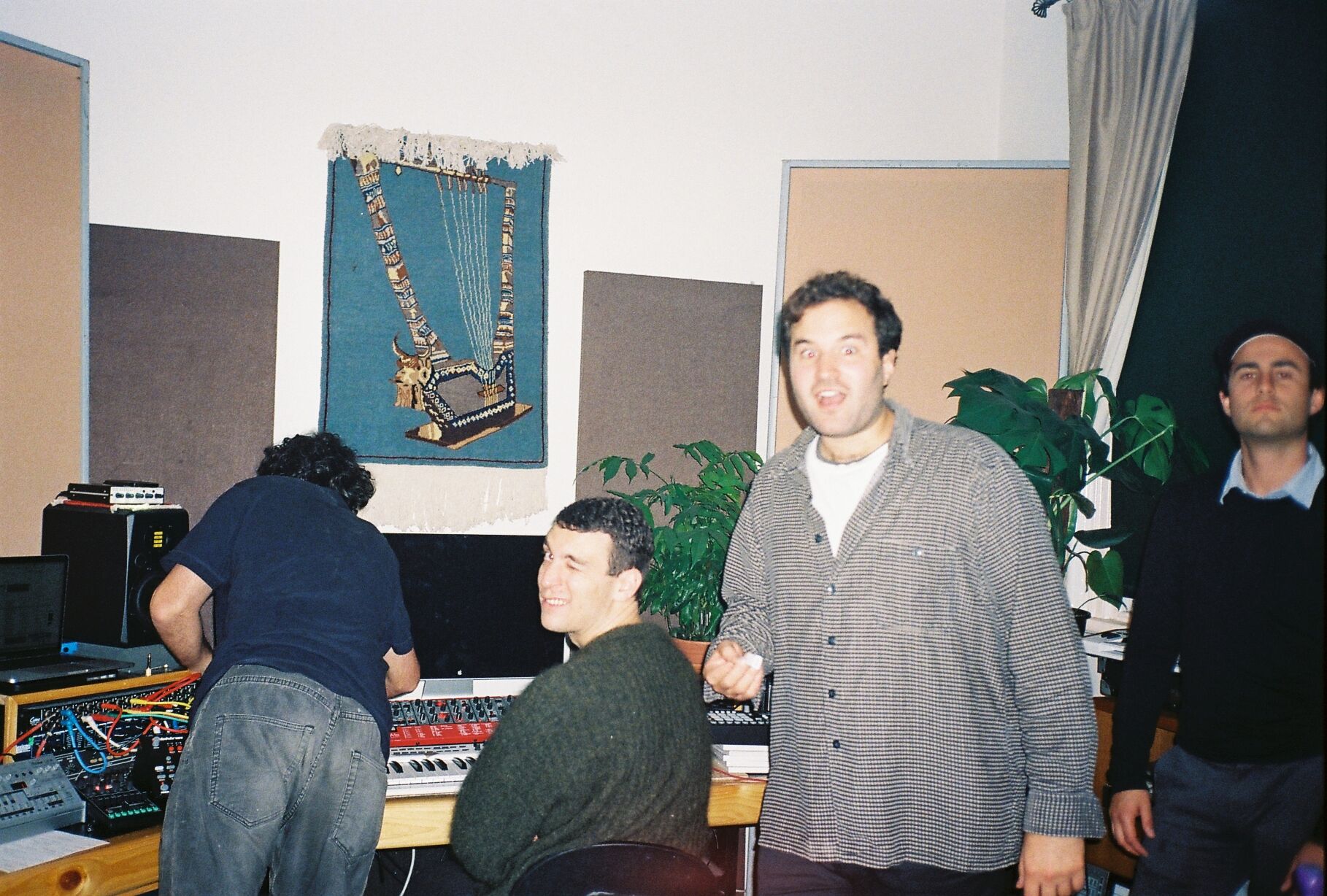
How did all of your respective tastes progress to the more underground styles you currently play and produce? Was it just a matter of your tastes refining?
Alex: I was always also exploring different styles at this time. I’ve always leaned towards instrumental music and electronic music more specifically.
Maryos & Corey: We were also listening to this late-night national radio show where they would play less commercial stuff when we were 15 or so. It was a combination of that and the internet/forums. We got bored with that stuff by the time we were 17 or 18 and we started going out to the city and meeting new people and going to more open parties like the Sound Of Thought, Knee Deep, and C Grade. It was a natural progression for us.
What about you, Sean?
Sean: I first got into this kind of music when I went to Berlin about six or seven years ago. My friends took me to places like Tresor and Weekend, and there I acquired a real taste for it. Then coming back home I saw the magic of our scene here with events like C Grade.
And when did you begin producing?
Alex: I can’t actually remember the first time I started producing music. I remember downloading FL Studio, then moved to Logic quickly afterwards before settling with Ableton a year or two later.
Corey: I started by making edits/mashups in a program called Virtual DJ when I was about 13. I wanted to try more technical things and I had read about this mad program called Ableton. From there, I started playing with the stock sounds you get with it and then Maryos and I started DJing together so I showed him what I had been learning.
Maryos: I learned Ableton at school and spent lots of time discussing the best ways to use it with Corey.
Sean: I was lucky enough to have Alex spoon-feed Ableton to me. I started producing when I met Alex. When I listen to the music I was making back then, it sounds like it comes from the same place as the music I make today. I would say that about all the music we individually made early on. It was just less coherent and refined.
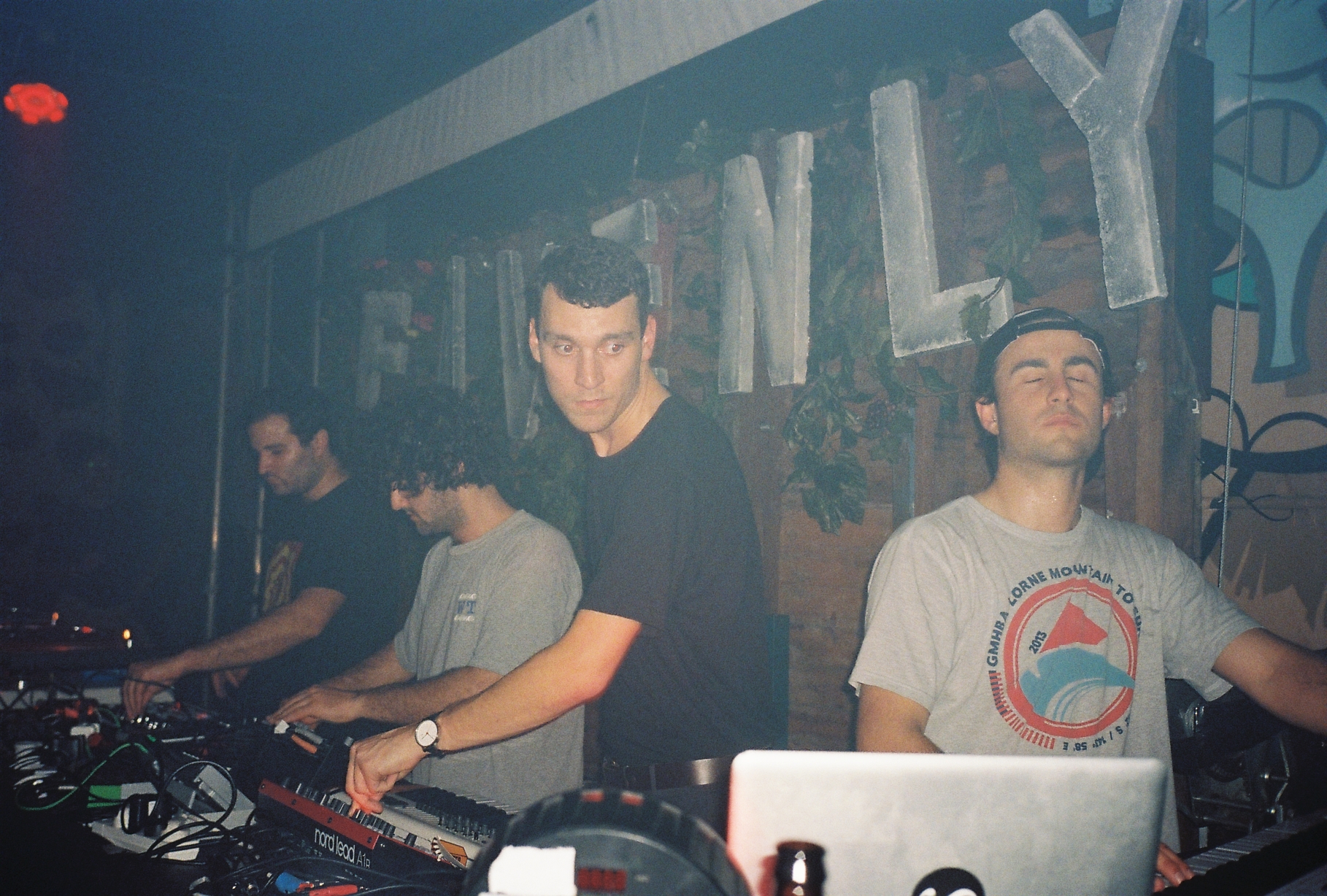
And how and when did you begin working in the studio/performing live all together? What was the inspiration for collaborating?
Alex and Sean: We just wanted to play music together after hanging out for a while. We felt that both of our styles would compliment one another—our more harmonic approach to music suited the more syncopated percussive elements of Sleep D. We had about two or three recording sessions over the space of six months before completing the first From 50 record much later. Working together has been quite a slow process, which also influences the sound; we’re able to revisit ideas in a new light and add/remove elements with a fresh set of ears. After about a year of knowing each other and playing gigs at the same shows, the four of us started playing together casually. We decided to first record in 2017 with From 50.
You’re all big proponents of the live aspect of electronic music—from your records to the performances. Is it fair to say that this inspired you to work together?
Sean: Absolutely, whenever we make music together it’s in a live format. We have the same approach as a band, rather than four blokes sitting around a computer and a synth—not that there’s anything wrong with that!
What draws you to this way of working?
Sean: For me, it’s about being fully engaged in the music. Sometimes in electronic music, you can become detached from the performance of music making, both on stage and in the studio. A lot of people have success in slowly constructing music part by part, but playing things live feels more natural for us.
Corey: I love the feeling that something can turn out very different to how you’ve planned it, which then gives you an opportunity to improvise something completely new live on stage. This is something Maryos and I have been trying to work on and, to a degree, control. I also think it’s a great way for groups of two or more electronic musicians to connect musically, each with their own “part” in the music.
How do you feel that this recording process influences the music that you make?
Maryos: The spontaneous nature of the production means that we’re really thinking about how each element interacts with one another. We’re also very respectful of the ideas and the sounds that each of us contributes to the music. Because we’re all in the same room together, we’re able to talk about what we think the music requires rather than editing later in the piece without consultation.
Do you think these early immersions in jazz were catalysts in leading to the freeform style of electronic music?
Alex: Perhaps, I think it was also a matter of being drawn to that style of music production. Having grown up listening to a lot of jazz, it’s nice to be able to use elements of the broader genre in a new, more modern format.
Sean: I think so, because we use a lot of elements of jazz in our live sets and in our productions—these could be chords, melodies or even some of the rhythms we use.
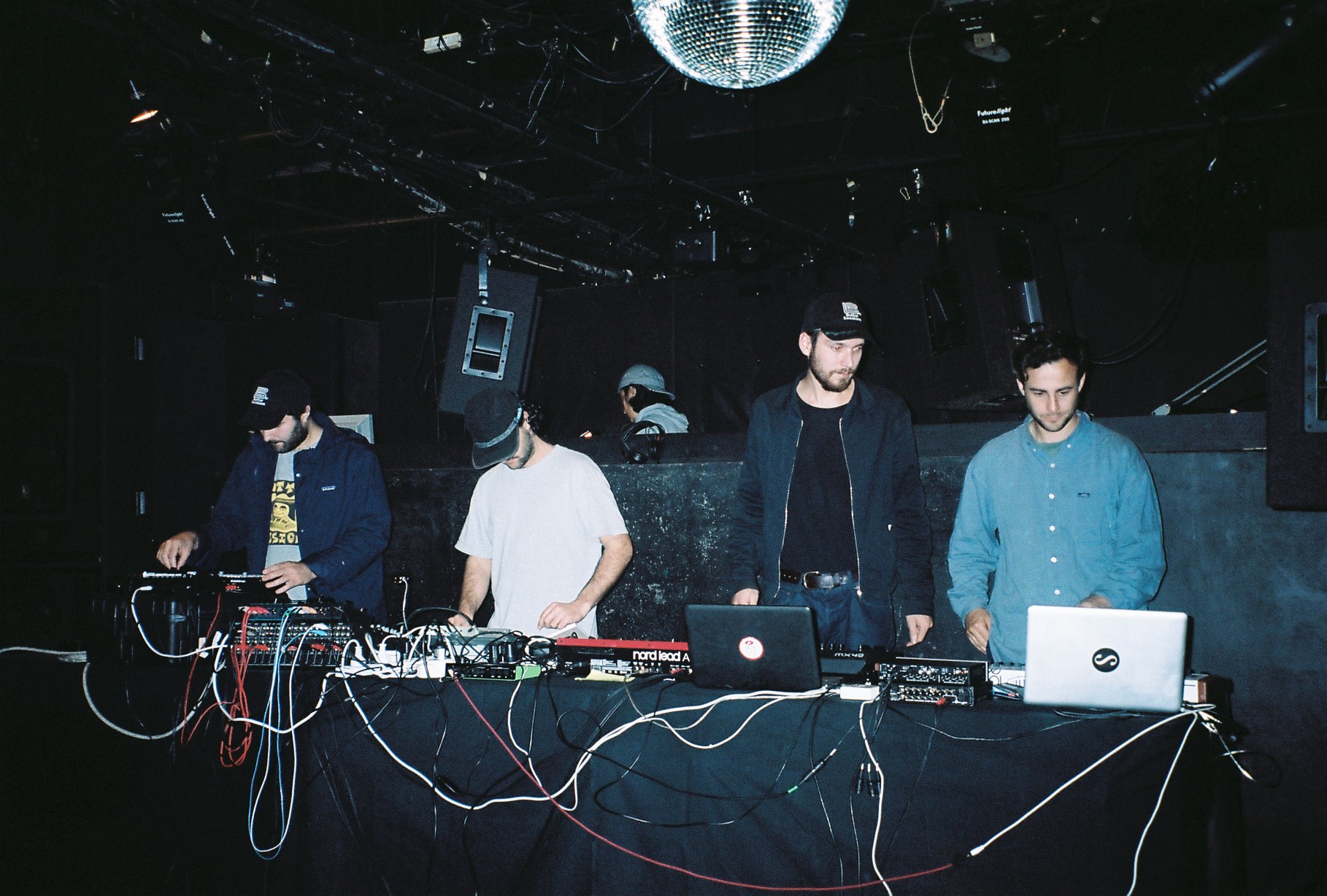
How do you approach these collaborative recordings and performances? Do each of you have defined roles?
Alex: We usually set up our regular kit and have a brief chat about how we think we should approach the recording then have a really long jam and pick the best parts out of it. It’s similar to the way myself and Sean create music as well. Following the recording, we will then go back and forth and tweak and refine the individual parts until we’re all happy with the final product.
Maryos: We basically have loose roles. Corey and I will usually take care of drum programming, mixing, sound design, sound effects, and some bass. Sean and Alex are both great piano players and have an amazing ability to improvise so they will usually create most of the melodic elements. But, of course, this can all be flipped upside down at times.
How do you all divide your time between the collaborative project and Sleep D and Albrecht La’Brooy? Do you find it easier working in a two to a four, or how does it compare?
Corey: I find it more natural to do long extended jams when working with Sean and Alex and more studio dubbing when working on Sleep D projects. I feel it’s this way because of the boys’ ability to play the melodic elements on the fly so naturally.
Sean: We spend the vast majority of our time in our own groups, but all the practice we do in those spaces translates when we get together as the four of us. Naturally, when we’re in our duos we have much more control. More freedom, but also more responsibility. When we’re playing in the quartet, we have a bigger and more complex sound, but less freedom. It’s like the difference between driving around in a luxury camper van and a sports car. Each is its own great experience.
Your releases and recordings as Sleep D & Albrecht La’Brooy sound like the work of a singular entity rather than four separate artists. Why do you think this is the case?
Corey: I think having the live approach to writing music helps make us gel more naturally. About ninety per cent of the output you hear from us is material made in one take. If someone’s not gelling during a jam, then we must start again.
How often does this happen? Is it obvious when you need to stop and start again?
Corey: It happens maybe half the time. Usually, the energy will drop in the room and you can tell it’s time to try something new.
Sean: Yeah, but it’s not like we hit stop and then start again, we just keep playing and look around and someone steps up and plays something better.
How do you navigate these moments when you’re not in sync when playing live?
Corey: One of us will start a new idea to bring in and take over. It’s a nervous moment but when it works it’s an amazing feeling.
Alex: Sean and I are quite familiar with this feeling and are able to recognise when things aren’t jelling and we quickly decide to move into something else.
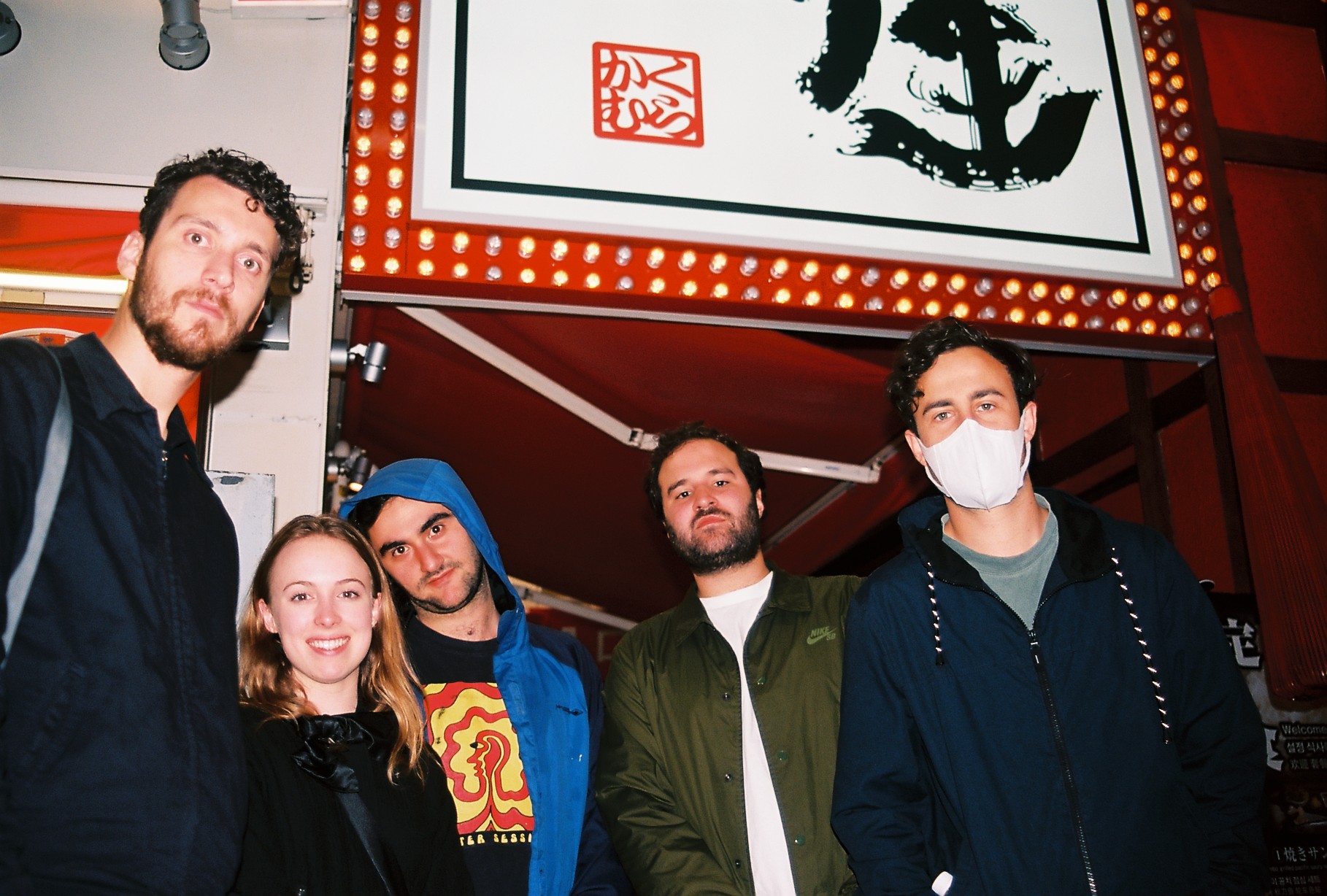
Tell us about your respective studios.
Corey: Maryos and I have a setup in a room at Maryos’ house. We also use this room as HQ for our label Butter Sessions and I do mixing and mastering out of there. We share the room with Hector the dog and sometimes Jonti the dog.
Sean: Alex and I have studios set up at each of our houses and we take turns jamming at each. We use a bit of outboard gear when we’re jamming and then refine our work in the box.
What about your live setups—are they a direct reflection of your studios?
Sean: We use almost all the same equipment in our live setups as we do in the studio.
Corey: Our studio has actually started partially reflecting our live setups now!
Most Australian artists leave Australia and become recognized overseas before Australian audiences will properly catch on; you four, however, have stayed local and grown a scene organically. What do you think have been the biggest factors in the success of this approach?
Sean: Good music often carries references to a specific period of time, place, and culture. Other cities have had great success in defining strains of electronic music: Detroit techno, NY disco, UK garage, etc. I think some elements of our music and style may not have been the same had we been submerged in a European scene. It’s important to have something unique to offer.
Maryos: Cultivating the scene in Melbourne and Australia has been one of the main activities for Butter Sessions since we started around eight years ago. We’ve seen people’s hunger for this strain of music in Australia growing and growing in that time. If it wasn’t for the punters, record stores, community radio stations, and genuine party promoters out there it would be very hard, if not impossible, for us to keep doing our thing here.
Who are some of these key artists, labels, and crews?
Maryos & Corey: If it wasn’t for Animals Dancing/C Grade and Inner Varnika (who somewhat stemmed from Out Of Focus, Sound Of Thought, and Knee Deep) we’d be in a different place right now. These guys are still throwing great parties. At the moment there are a lot of great labels and producers here and it’s impossible to name them all now but some that come to mind are Moontown Records run by Danny Wild (a.k.a. Low Flung), who is also an amazing producer. A Colourful Storm run by Moopie. Lots of killer stuff out of Perth at the moment as well, like Tourist Kid, Good Company, Guy Contact, Roza Terenzi, and, of course, the Red Embers stuff run by Ewan Jansen, all super interesting.
Australia and, more importantly, Melbourne and its surrounds have been big touchstones for your work. How does the area effect and inspire your art?
Alex: We’ve always wanted to create music and a label that had a distinct sound. We try and seek inspiration, sounds, and ideas from our surroundings to impart a sense of place in our music. We’re very lucky to have an enormous diversity of environments in Melbourne: beaches, forests, mountains, and bush are only an hour or so drive from our houses.
Corey: Melbourne also has a diverse range of cultures which may not come out in our music directly but I think it inspires us to keep searching for new things in music.
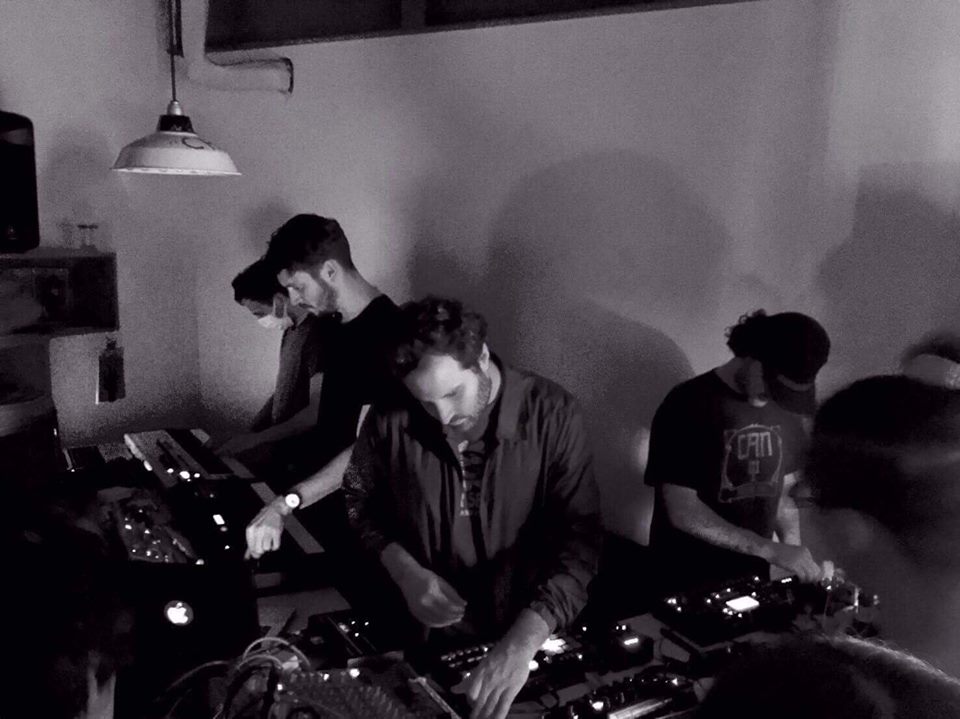
You’ve recorded a mix for us. What’s the story behind it?
Sean: It was a live improvised jam of the four of us playing. We sat down in the Sleep D studio, cracked a few beers, and had a play. It was a lot of fun, if you listen carefully at times you can hear some laughter that seeped in through the piano mic.
Looking forward, what’s on the horizon production and performance-wise?
Alex: We’re going to be working on a new EP and hopefully an LP soon.
Corey: We (Sleep D) have a tape out of a live score we did of the movie Eraserhead, as well as a couple of tracks upcoming on compilations. We’re also currently finishing off a heap of new music to come out over the next year.
Due to temporary issues regarding the GDPR, EU readers can download the mix here.

